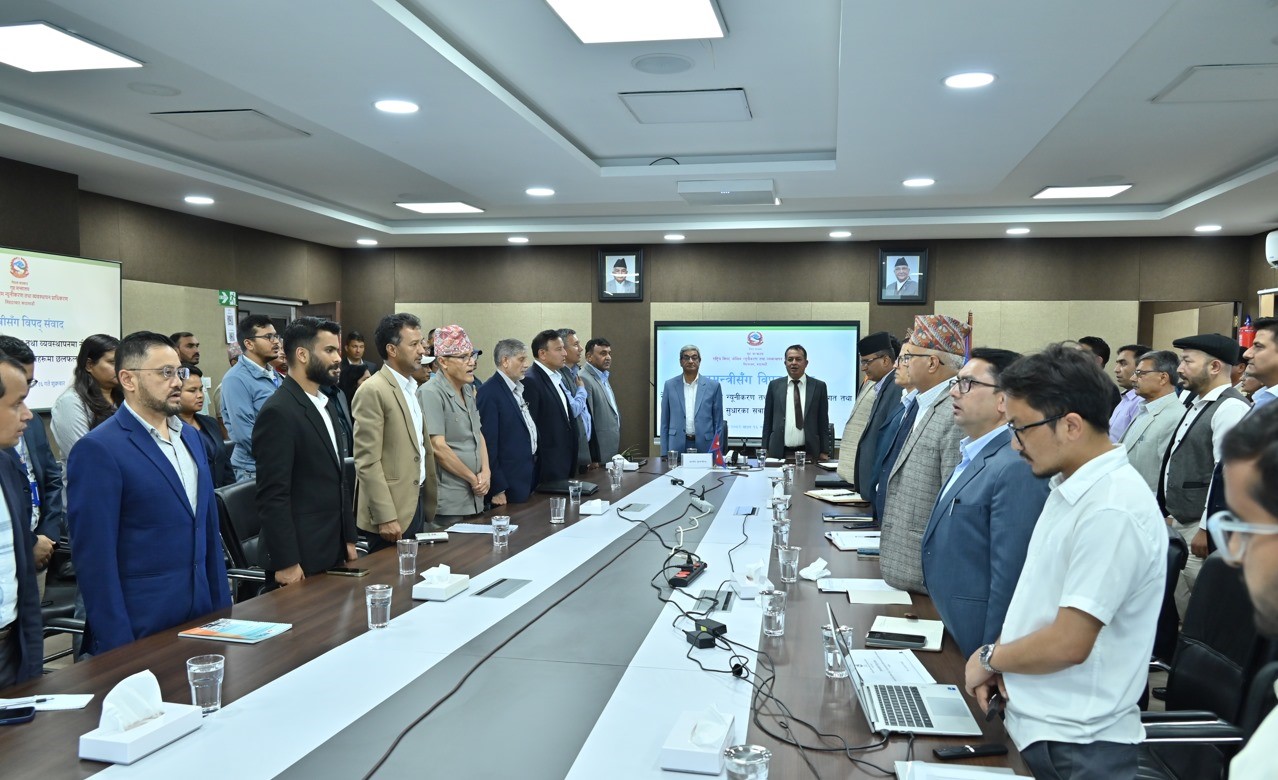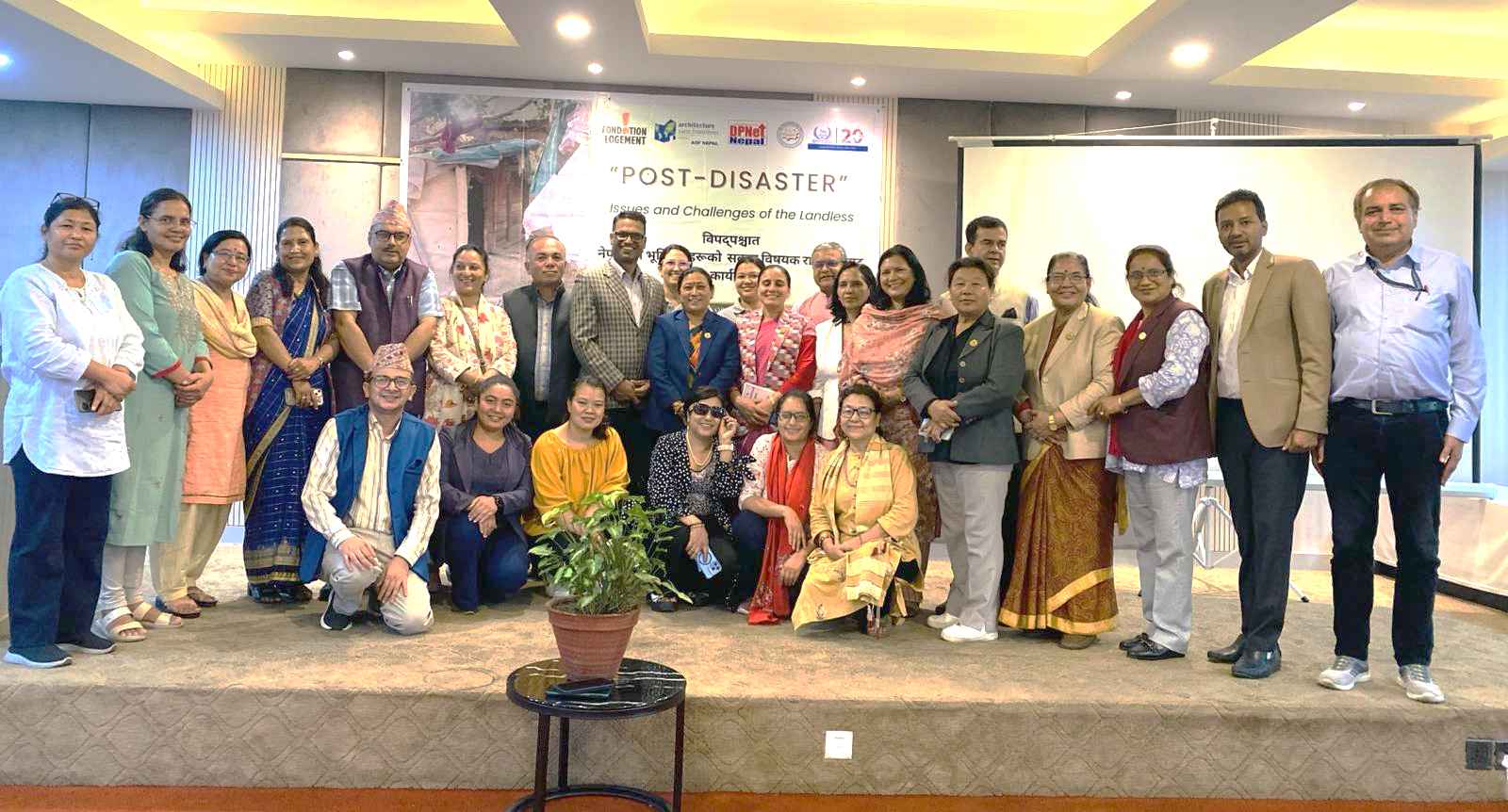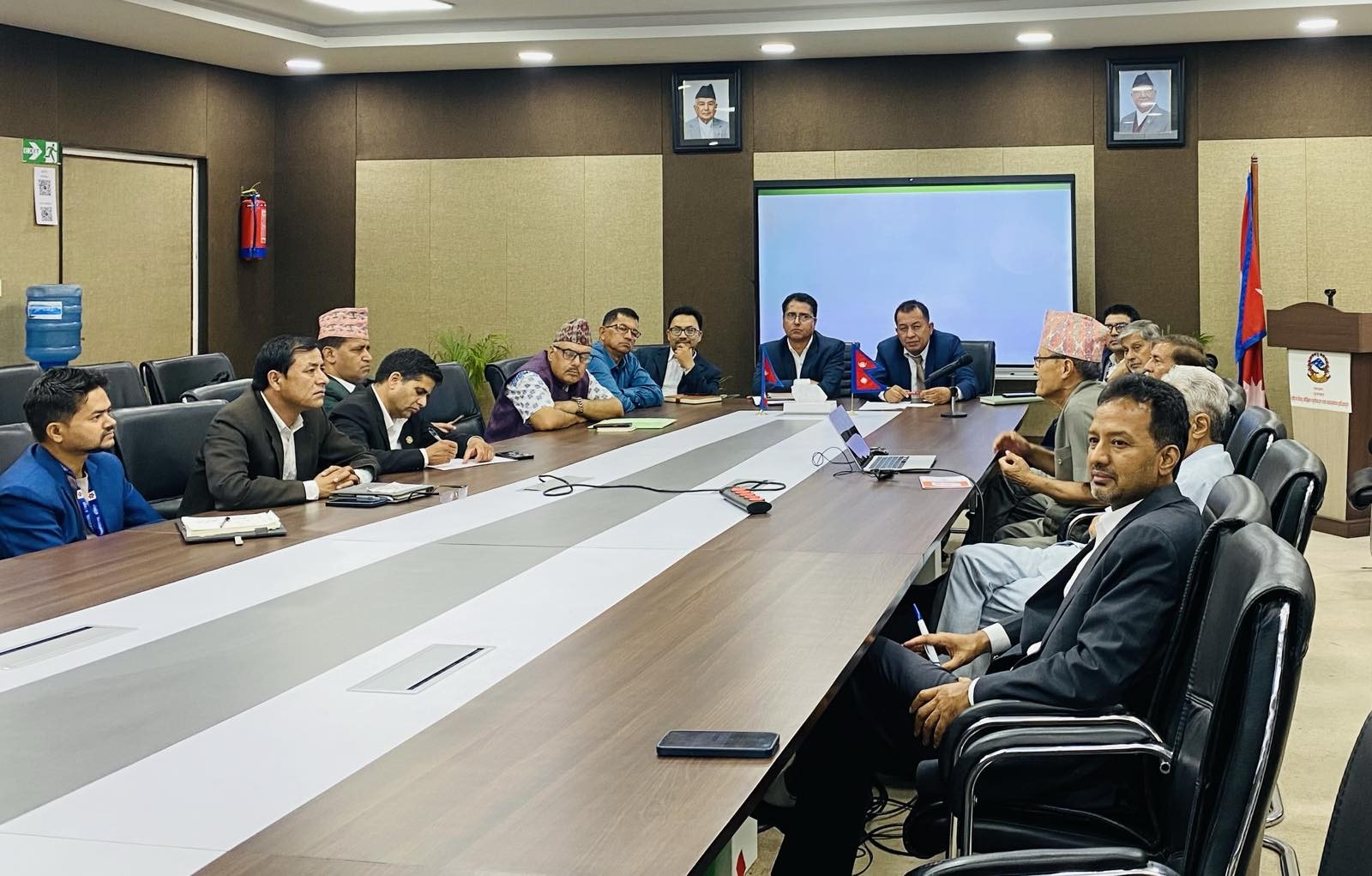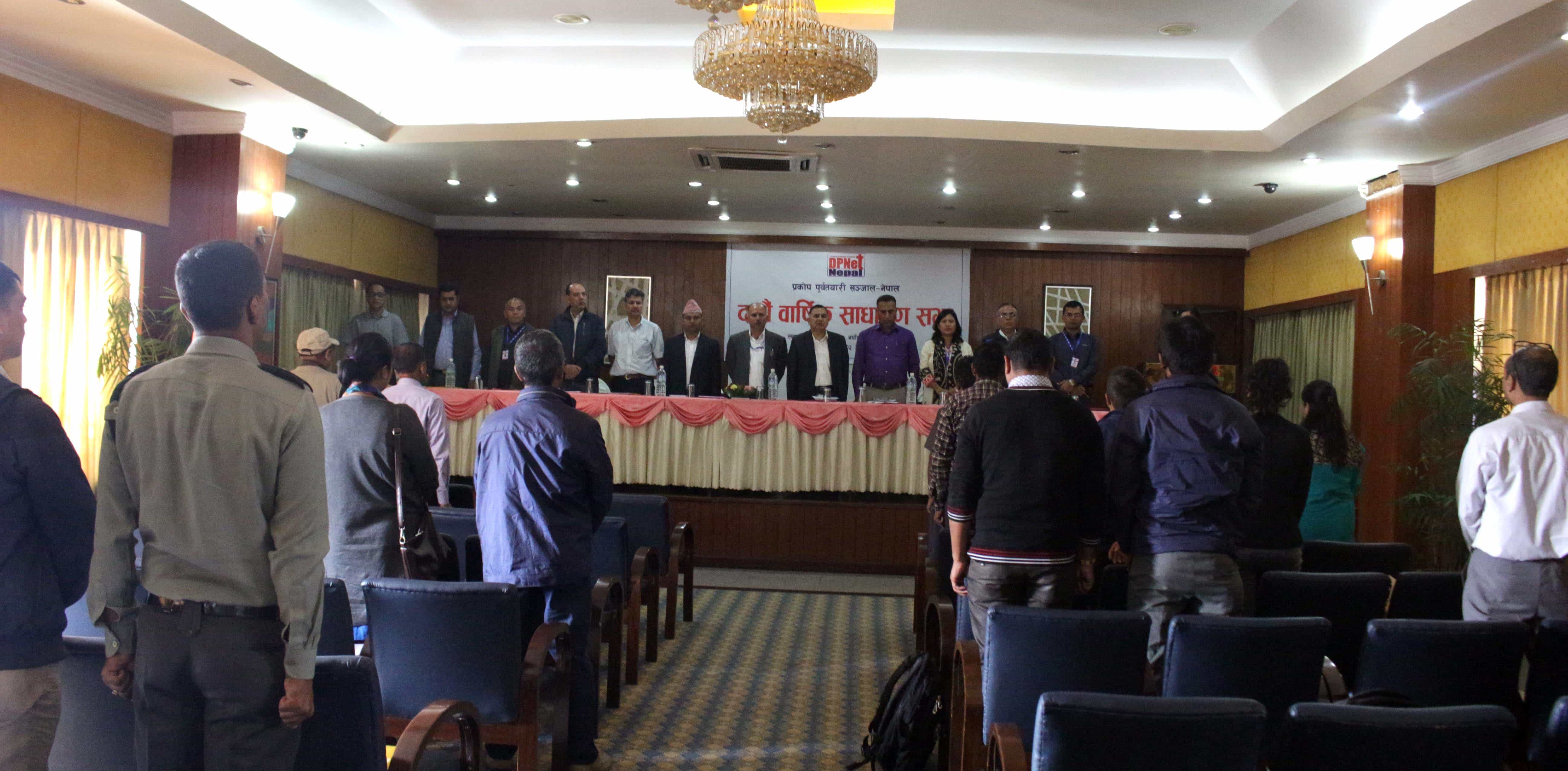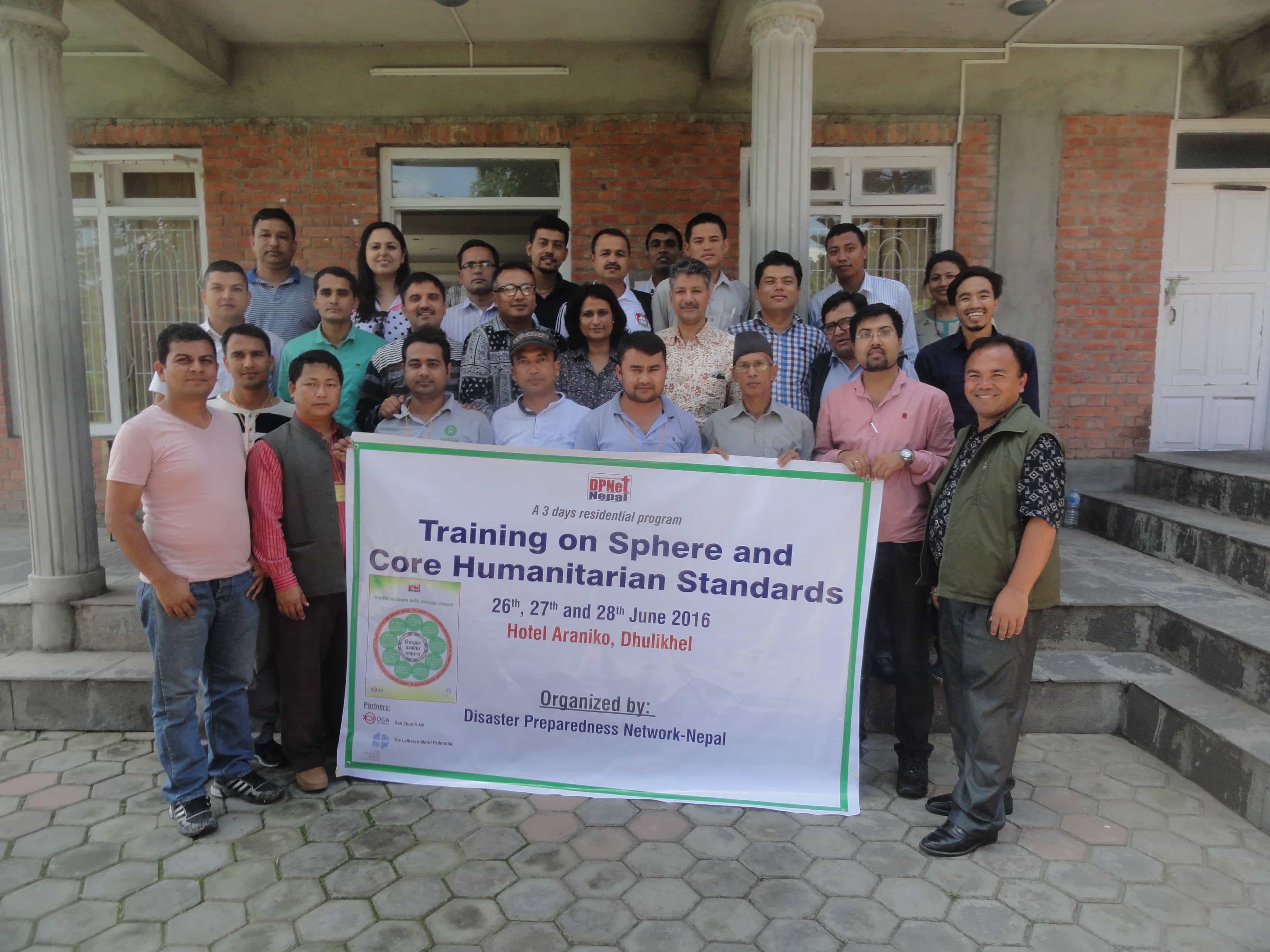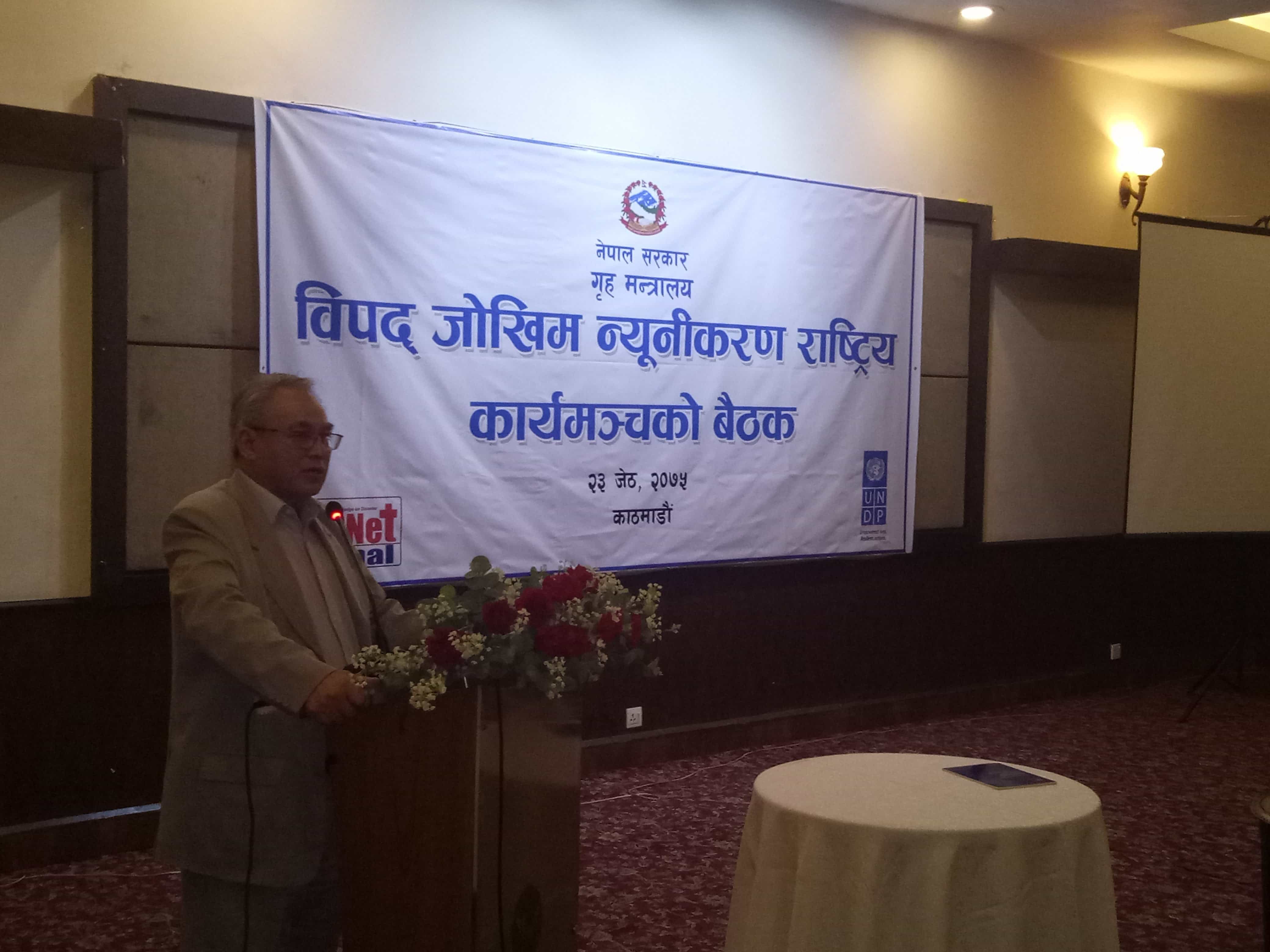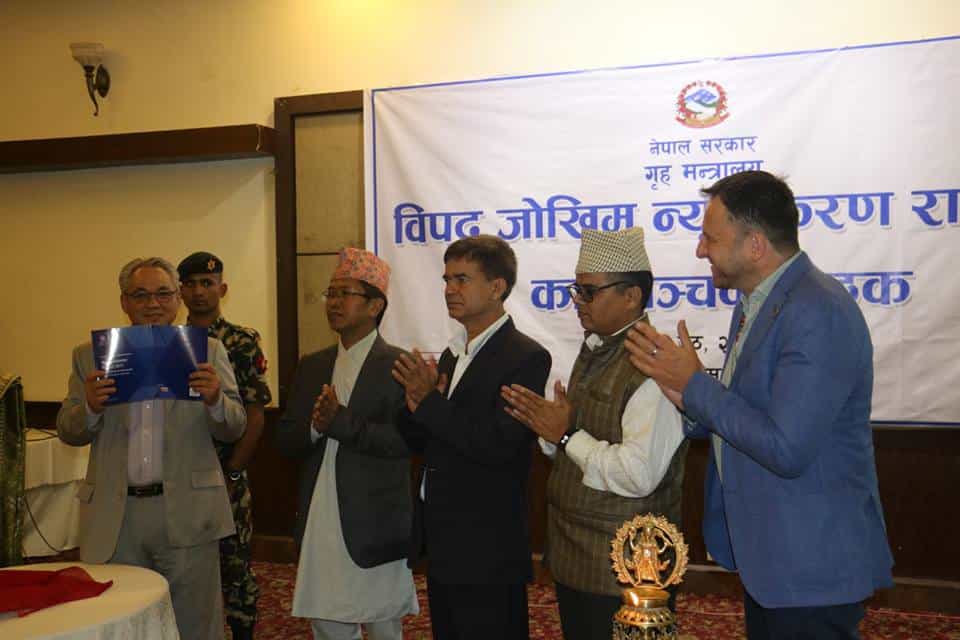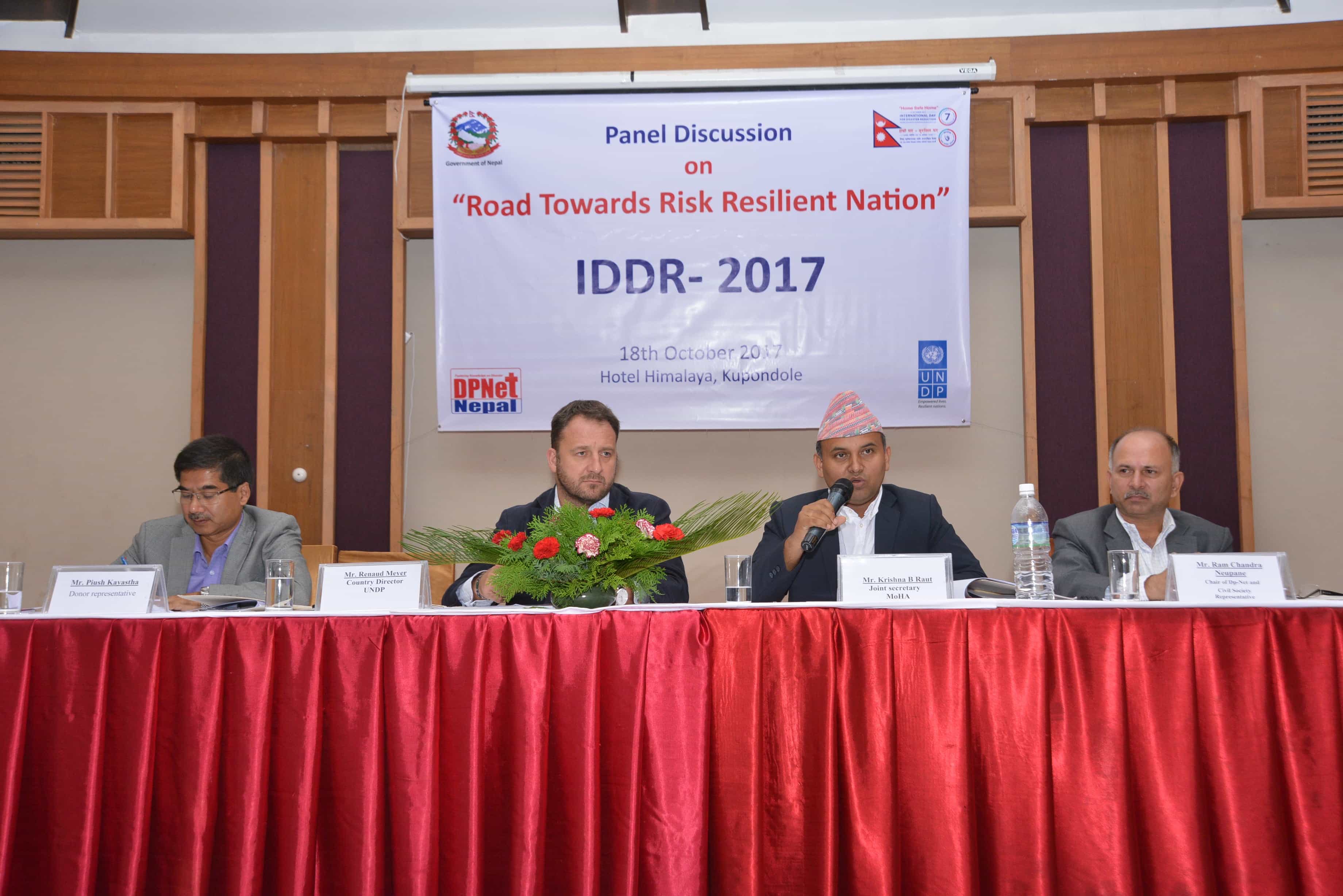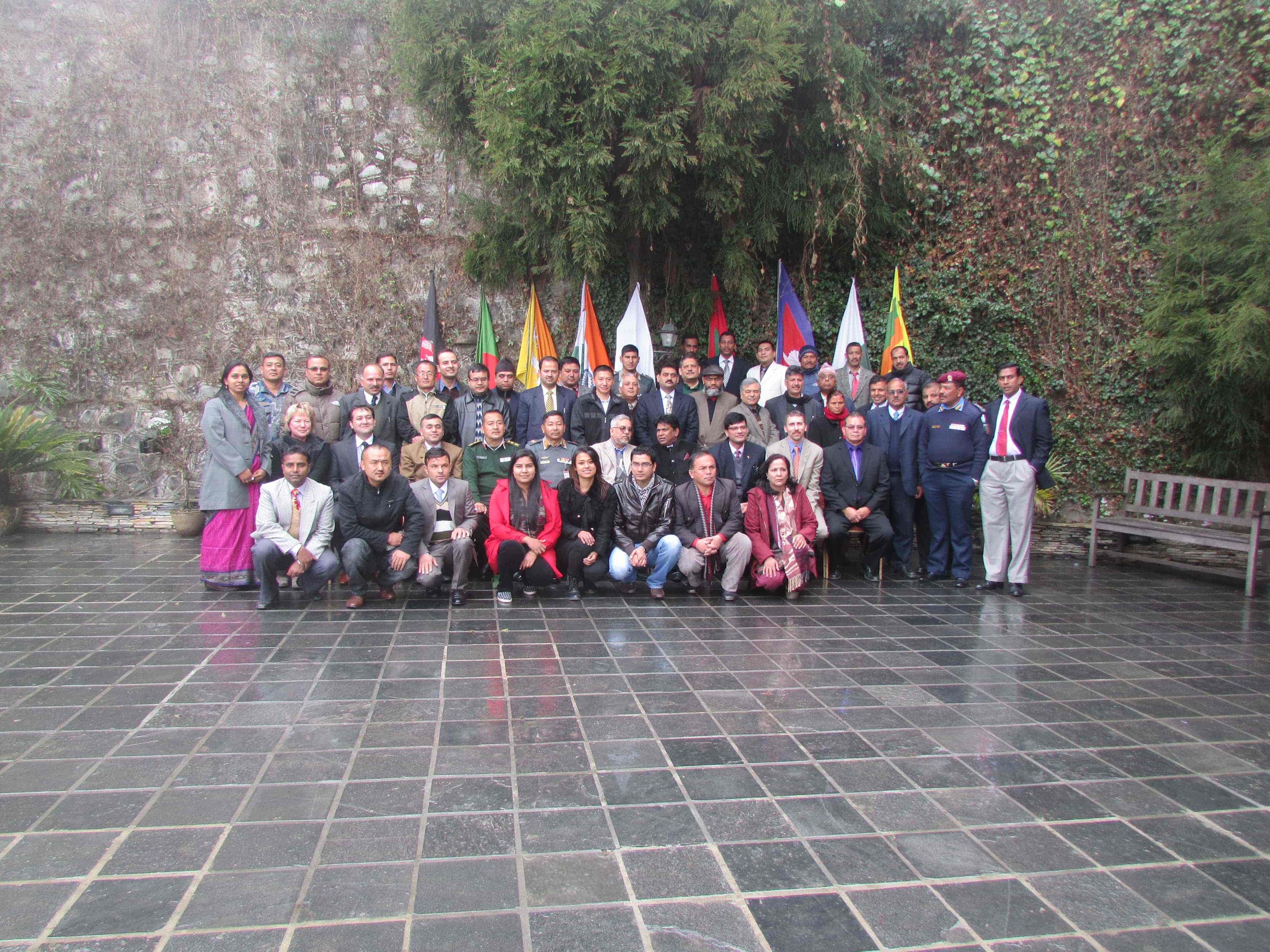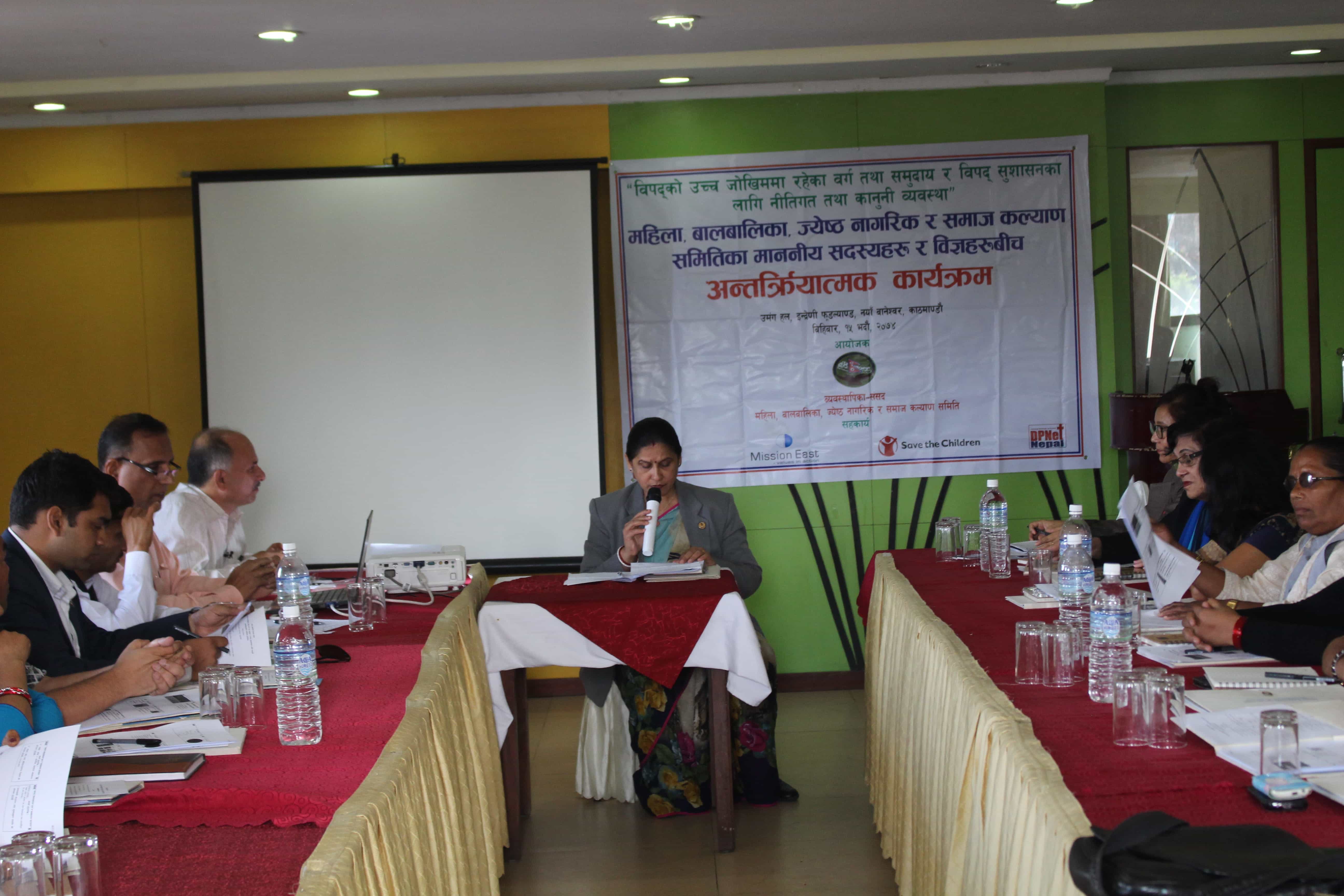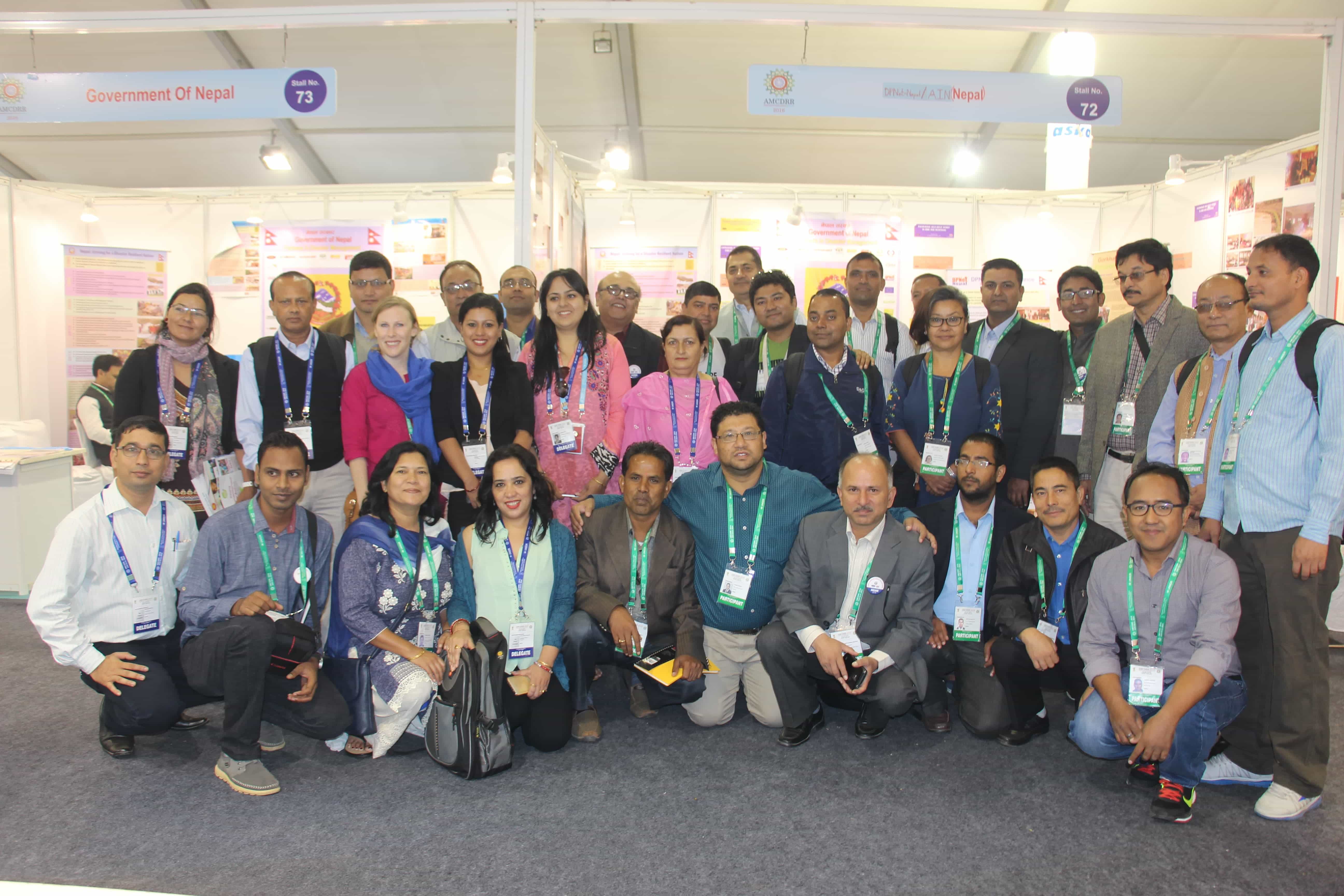Madhesh Province Monsoon Preparedness and Response Plan 2081 Workshop
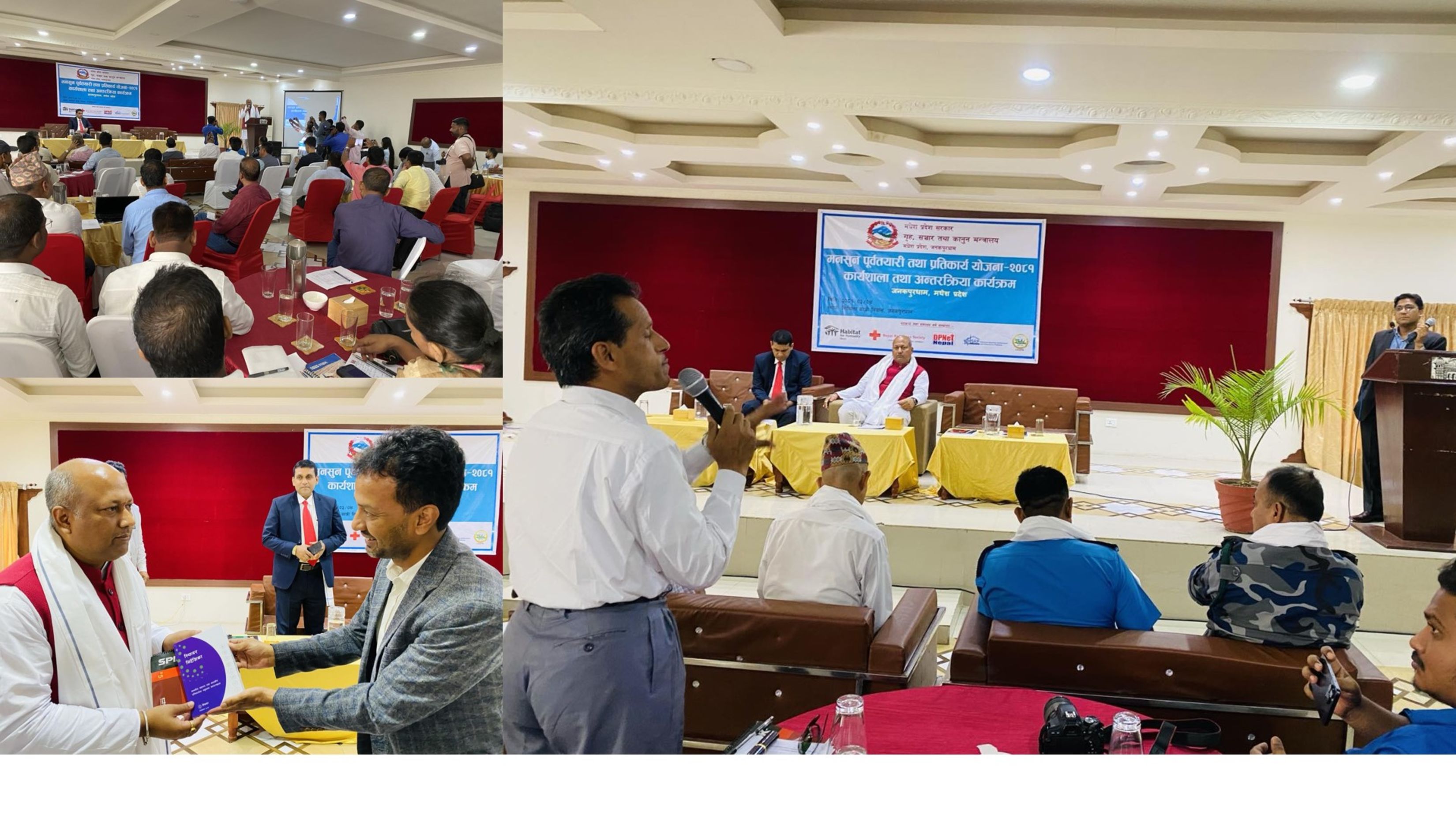
On June 18, 2024, the "Madhesh Province Monsoon Preparedness and Response Plan 2081" workshop organized by the Ministry of Home Affairs, Communication, and Law Madhesh Province at Mithila Yatri Niwas in Janakpurdham, in support of DPNet, Habitat for Humanity, Nepal Red Cross Society, NHSRP, and CDAFN, The program was chaired by Mr. Birendra Kumar Yadav Secretary Ministry of Home Affairs, Communication, and Law (MoHACL), while Chief Minister, Madhesh Province, Hon. Satish Kumar Singh graced the occasion as the Chief Guest. The program was facilitated by Mr. Tek Bikram Shah, MoHACL. The event was participated by key stakeholders from various government ministries, local authorities, security agencies, and development partners, which drew the participation of 94 attendees. The objectives of the workshop were to discuss Madhesh Province's Monsoon Preparedness and Response Plan 2081 for the monsoon season by focusing on strategies and plans for monsoon preparedness and response.
Mr. Uttam Prasad Kharel, Under Secretary of the Ministry of Home Affairs, Communication, and Law (MoHCL), opened the session with his welcome remarks. He gave an overview of the program's objectives, focusing on how important it is to improve the province's reaction and readiness plans for the approaching monsoon season. Mr. Kharel emphasized the value of cooperative efforts amongst different stakeholders to reduce the risks connected to disasters related to the monsoon.
Kedar Neupane, a former Government secretary and DPNet advisor, gave the event's background after the inauguration. In his remarks, Mr. Neupane emphasized the serious difficulties that the monsoon season presents as well as the need to have thorough preparation and mitigation plans. His observations provided a clear structure and emphasized the importance of efforts to protect local communities from monsoon-related disasters.
Dr. Dijan Bhattarai Spokesperson, NDRRMA presented the National Monsoon Preparedness and Response Plan. He provides an overview of the past incidences and losses faced by Madhesh province from monsoon-induced disasters over the previous ten years examined from 2070 to 2080 B.S. In this time frame, 259 events occurred in the province leaving 3,640 houses damaged, 136 deaths, and 26 individuals missing. The districts that were identified as being most impacted included Rautahat, Saptari, Mahottari, Sarlahi, and Bara. In this period of ten years, a lightning event took 140 lives, with the highest evidence on Saptari and Parsa. Dr. Bhattarai provides an overview of the current work being done in response to monsoon-induced disasters. This includes engagement with the Chief District Officers, along with the heads of security agencies and concerned parties, including the District Magistrate of the border area of India. The Ministry of Physical Infrastructure and Transport, the local level and the district disaster management committee have been requested to make arrangements for the immediate removal of the accumulated materials to protect the physical structures (bridges, bridges, roads) that are at risk due to the accumulation of stones, gravel, and sand. According to a risk assessment, monsoon catastrophes might potentially affect 412,000 families and 1.81 million people by the year 2081. Dr. Bhattarai highlighted the key rapid response plan managed by the Monsoon Preparedness and Response Command Center, which includes search and rescue, food security, emergency shelter, health care, and infrastructure restoration. He mentioned that steps were also taken to ensure Madhesh Pradesh was prepared for the impending monsoon, including measures for resource management, communication readiness, and support for vulnerable people.
Mr. Mean Kumar Aryal, Senior Divisional Meteorologist, DHM provides a presentation on, Weather Forecast and Observation, monsoon and its potential impact. He provides details about the services offered by the weather forecast system, which include open-source weather models, quality weather anticipation, satellite and ground observation and monitoring, and the use of weather radars. Highlighting the DHM services, Mr. Aryal provided an overview of flood forecasts, climate services, weather forecasting for aircraft, and agro-meteorological services. He emphasized the three types of services that DHM provides: routine services, non-routine services, and on-demand services. He also described the current monsoon situation in Nepal, stating that it starts on June 10 in Koshi Province and lasts for several days. It is now affecting Koshi Province and the eastern regions of Bagmati and Madhesh Province, and it will continue to advance from southeast to northwest. Mr. Aryal also discusses the obstacles, chances, limitations, and strategies for better weather observation and cooperation to respond to dangers and provide precise forecasts.
Mr. Sandip Kumar Singh, Law Officer, MoHCL shared a presentation that highlighted important topics that are necessary for successfully managing yearly catastrophes. Firstly, he highlighted the background of the province along with its vulnerability to a variety of natural disasters, such as landslides, floods, erosions, and inundations, which makes a thorough preparedness plan necessary. He stated goals as to minimize financial and human losses, integrate disaster response strategies across agencies, and estimate risks. He highlighted the need for detailed analysis of current frameworks, identification of areas for improvement, and alignment with relevant policy and legal norms were all part of the preparation process. Anticipated monsoon conditions for 2081 indicated possible rainfall patterns and particular danger locations, directing preparedness activities in the right direction. He explains that the lead and co-lead agencies in the relevant area were assigned key organizational roles to provide a coordinated approach to disaster management. The key initiatives of the Ministries of Home Affairs, Communications, and Law were also described in detail. Mr. Singh provided details about Madhesh Province's preparedness and response for the impending monsoon season. The roles included funding allocation, rescue operation coordination, and emergency operation center maintenance. Additionally, information was provided regarding relief supplies, search and rescue activities, and contact details for disaster-focal persons.
Mr. Nagdev Yadav, Chair, DPNet Madhesh Province/ Chair, CDAFN/Chure Expert NAST delivered the presentation on the "Chure Conservation for Water Resource Management, Biodiversity Conservation, Livelihood Promotion". He elaborates on the Chure region's best practices and indigenous innovations. He discussed the effective tactics and cutting-edge methods that have been used to address the region's socioeconomic and environmental problems. Mr. Yadav focuses on the strategies and concepts used in the Ratu River region of the Mahottari and Dhanusha Districts, Nepal. Building rainwater harvesting ponds to increase water availability, using subterranean seepage for drinking and irrigation, and using bioengineering techniques to reduce soil erosion and preserve biodiversity were some of the major activities performed. To improve local livelihoods, sustainable agricultural methods on riverbeds were also encouraged. He explains that the initiatives placed a strong emphasis on capacity building and community involvement. Successful models were expanded through knowledge exchange and cooperation with domestic and foreign partners. Numerous honors and recognitions were given to the efforts, highlighting their significance for both socioeconomic development and environmental preservation in the area. He shared that his best practices will be useful for all stakeholders including governments to prepare better for the monsoon and hydro-metro-related disaster.
Inputs and Feedback
The participants provided various inputs on the Madhesh Province Monsoon Preparedness and Response Plan 2081. Emphasis was placed on the need for government engagement with civil society, NGOs, and INGOs in developing the plan. It was suggested that the upcoming monsoon preparedness and response plan should prioritize inclusive participation, community empowerment, and sustainable development practices. The importance of collaboration to enhance resilience and ensure effective disaster response was stressed, along with proactive measures in risk reduction and timely response mechanisms. The workshop highlighted that the monsoon preparedness and response plan should encompass key aspects such as risk assessment, early warning systems, community preparedness, resource allocation, response and relief protocols, and long-term recovery programs. The significance of coordination with federal ministries, provincial departments, local governments, and disaster management committees to protect high-risk areas and mitigate risks was emphasized. Additionally, the importance of creating long-term solutions to deal with disasters was stressed, pointing out that many unavoidable tragedies occur unexpectedly. The efficiency of local government management was questioned, with comparisons drawn to more effective systems in other countries. It was noted that problems related to rain have significantly increased in the Terai region, underlining the necessity of an integrated approach moving forward. The necessity of orientation and training in disaster management was emphasized.
Remarks
Mr. Ram Bahadur Shrestha, Habitat for Humanity Nepal, emphasized the need for government engagement with civil society, NGOs, and INGOs in developing the monsoon preparedness and response plan. He highlighted Habitat for Humanity's active support of such initiatives within its project areas, including organizing workshops in Koshi Province. Mr. Shrestha suggested that the upcoming monsoon preparedness and response plan of Madhesh Province should prioritize inclusive participation, community empowerment, and sustainable development practices. He stressed the importance of collaboration to enhance resilience and ensure effective disaster response, urging proactive measures in risk reduction and timely response mechanisms.
Dr. Raju Thapa, Chair, DPNet Nepal, emphasized in his remarks that the monsoon preparedness and response plan should encompass various key aspects, including risk assessment, early warning systems, community preparedness, resource allocation, response and relief protocols, and long-term recovery programs. He highlighted that numerous disaster events occur annually in Koshi and Madhesh Province, highlighting the necessity of organizing participatory workshops to get feedback from various stakeholders. Dr. Thapa highlighted the need to form NPDRR provincial-level committees in Madhesh Province. He ensured that DPNet Nepal would facilitate and implement these initiatives with the support of all member organizations. In developing a monsoon preparedness and response plan, Dr. Thapa emphasized that Madhesh Province must prioritize several critical aspects. First, a comprehensive risk assessment based on historical data and scientific studies should be conducted to evaluate potential impacts such as floods and landslides. He stressed the importance of coordination with federal ministries, provincial departments, local governments, and disaster management committees to protect high-risk areas and mitigate risks. Dr. Thapa also highlighted the importance of immediate and long-term actions for monsoon-related disaster response. This includes setting up early warning systems, training emergency response teams, and collaborating with local communities, NGOs, and private sectors for efficient resource management and relief distribution. He mentioned that establishing effective communication channels and organizing regular stakeholder meetings will further enhance the province’s preparedness and response capabilities. In the program, he handed over some publications like Sphere Standard to the Chief Minister and other guests.
Hon. Braja Kishor Yadav, Province Policy Commission emphasized several important issues regarding disaster management. He emphasized the significance of creating long-term solutions to deal with such calamities and pointed out that many unavoidable tragedies would undoubtedly happen unexpectedly. Hon. Yadav concurred with the participants' statements, saying that since the precise start date of the monsoon was already known, the workshop should have taken place before its arrival. He questioned the efficiency of the local government's management, drawing comparisons with Bangladesh's and India's more effective systems. Hon. Yadav said that problems related to rain have increased by 52% in the Terai region and underlined the necessity of an integrated approach going forward.
Special Remarks
Hon. Satish Kumar Singh, Chief Minister of Madhesh Province, emphasized the necessity of training youth and children in disaster management in his closing remarks. He stressed the importance of integrating disaster management education into the school curriculum, highlighting the current lack of participation from young people. According to Singh, engaging school-level children and youth is crucial for shaping the future and building a resilient society. The Chief Minister noted that disaster management programs have traditionally been implemented by non-governmental organizations. Moving forward, the state government will collaborate with these organizations to enhance disaster management efforts. He highlighted the importance of effective monsoon preparedness and sustainable practices in disaster management. Drawing from his experience as the former Mayor of Tilathi Koiladi, Chief Minister Singh shared successful initiatives, such as establishing early warning systems in collaboration with neighboring municipalities, Rajbiraj and Rupani. These initiatives were sustained through dedicated funds, ensuring long-term resilience against monsoon-induced hazards. "Developing a robust monsoon preparedness and response plan is vital for mitigating the impacts of heavy rainfall and associated disasters," said Chief Minister Singh. "This year, Madhesh Province is expected to receive significant rainfall, and we must focus our preparedness activities accordingly. Our provincial government is committed to supporting all development partners and facilitating collaborative efforts to enhance disaster resilience."
Closing Remarks
Mr. Birendra Kumar Yadav Secretary Ministry of Home Affairs, Communication, and Law
Mr. Birendra Kumar Yadav, Secretary of the Ministry of Home Affairs, Communication, and Law, expressed his gratitude to all participants and supporting agencies for their valuable contributions to the "Madhesh Province Monsoon Preparedness and Response Plan 2081" workshop. He emphasized the importance of collective efforts in enhancing disaster resilience and acknowledged the feedback provided by the attendees. Mr. Yadav highlighted that the insights and suggestions received during the workshop are essential for refining the draft Monsoon Preparedness and Response Plan. He assured that these inputs would be incorporated into the final plan, which will be made public soon. Mr. Yadav stressed the necessity of coordinated actions, sustainable practices, and youth engagement in disaster management. He reiterated the commitment of the provincial government to support all development partners in mitigating the impacts of monsoon-induced disasters and ensuring the safety and well-being of the community.
